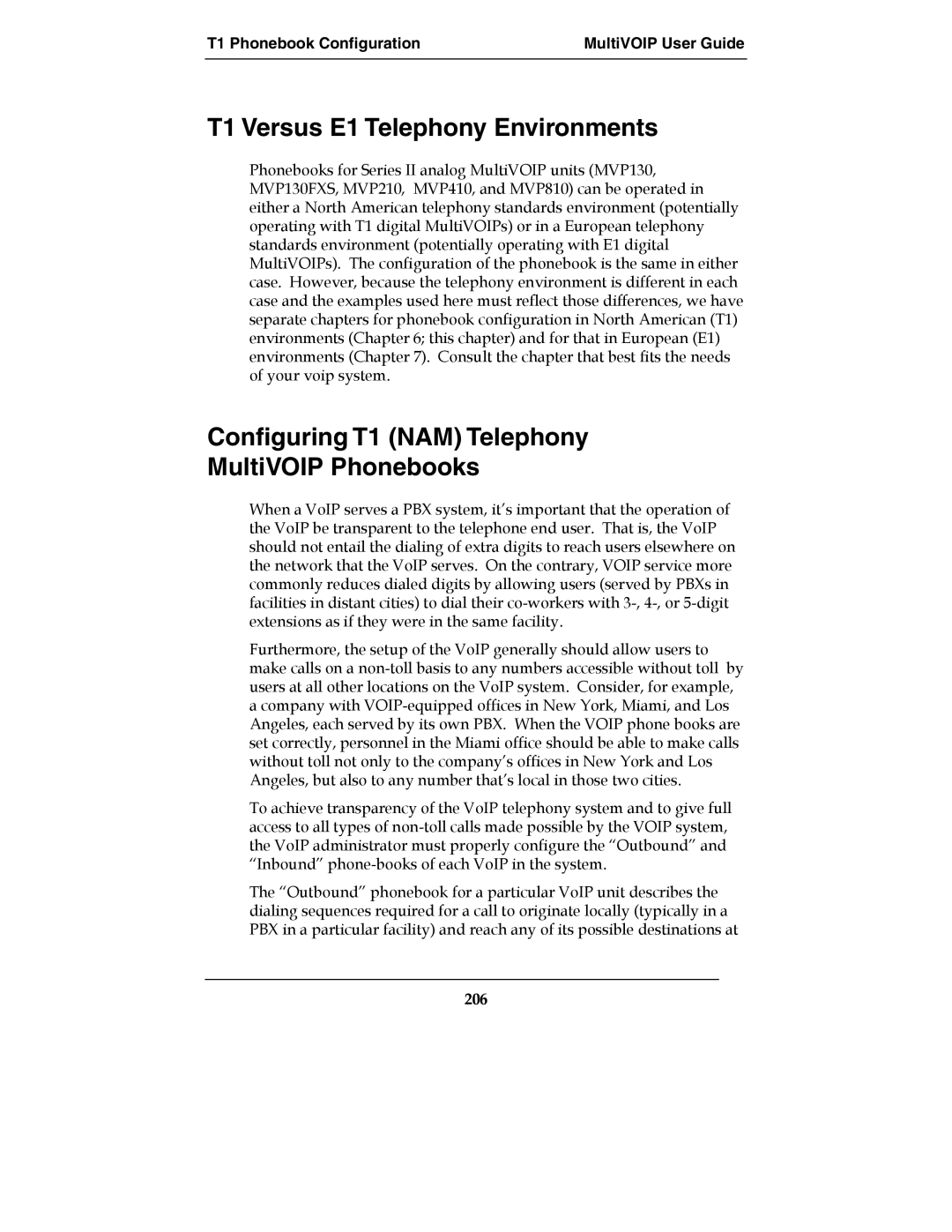T1 Phonebook Configuration | MultiVOIP User Guide |
|
|
T1 Versus E1 Telephony Environments
Phonebooks for Series II analog MultiVOIP units (MVP130, MVP130FXS, MVP210, MVP410, and MVP810) can be operated in either a North American telephony standards environment (potentially operating with T1 digital MultiVOIPs) or in a European telephony standards environment (potentially operating with E1 digital MultiVOIPs). The configuration of the phonebook is the same in either case. However, because the telephony environment is different in each case and the examples used here must reflect those differences, we have separate chapters for phonebook configuration in North American (T1) environments (Chapter 6; this chapter) and for that in European (E1) environments (Chapter 7). Consult the chapter that best fits the needs of your voip system.
Configuring T1 (NAM) Telephony
MultiVOIP Phonebooks
When a VoIP serves a PBX system, it’s important that the operation of the VoIP be transparent to the telephone end user. That is, the VoIP should not entail the dialing of extra digits to reach users elsewhere on the network that the VoIP serves. On the contrary, VOIP service more commonly reduces dialed digits by allowing users (served by PBXs in facilities in distant cities) to dial their
Furthermore, the setup of the VoIP generally should allow users to make calls on a
To achieve transparency of the VoIP telephony system and to give full access to all types of
The “Outbound” phonebook for a particular VoIP unit describes the dialing sequences required for a call to originate locally (typically in a PBX in a particular facility) and reach any of its possible destinations at
